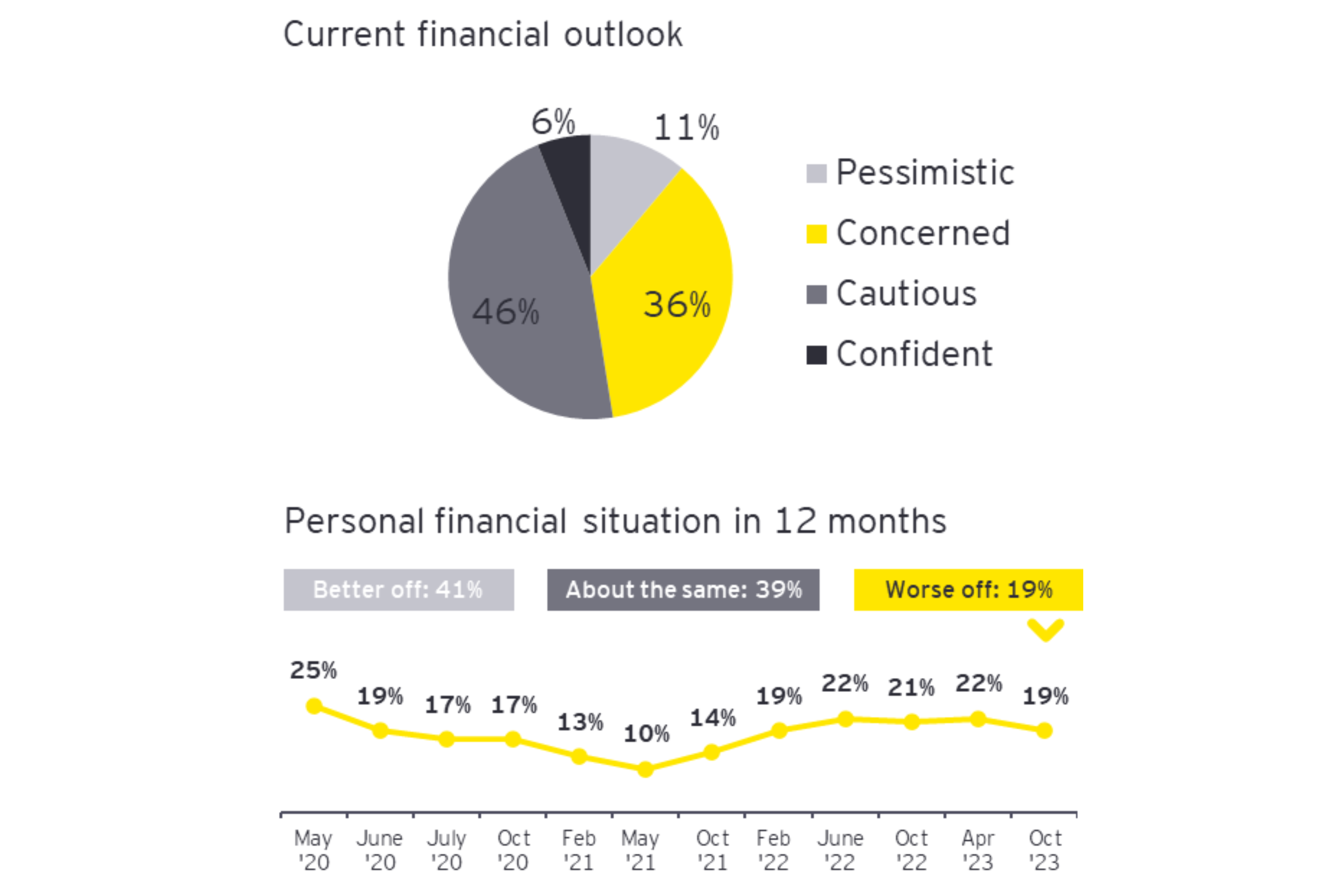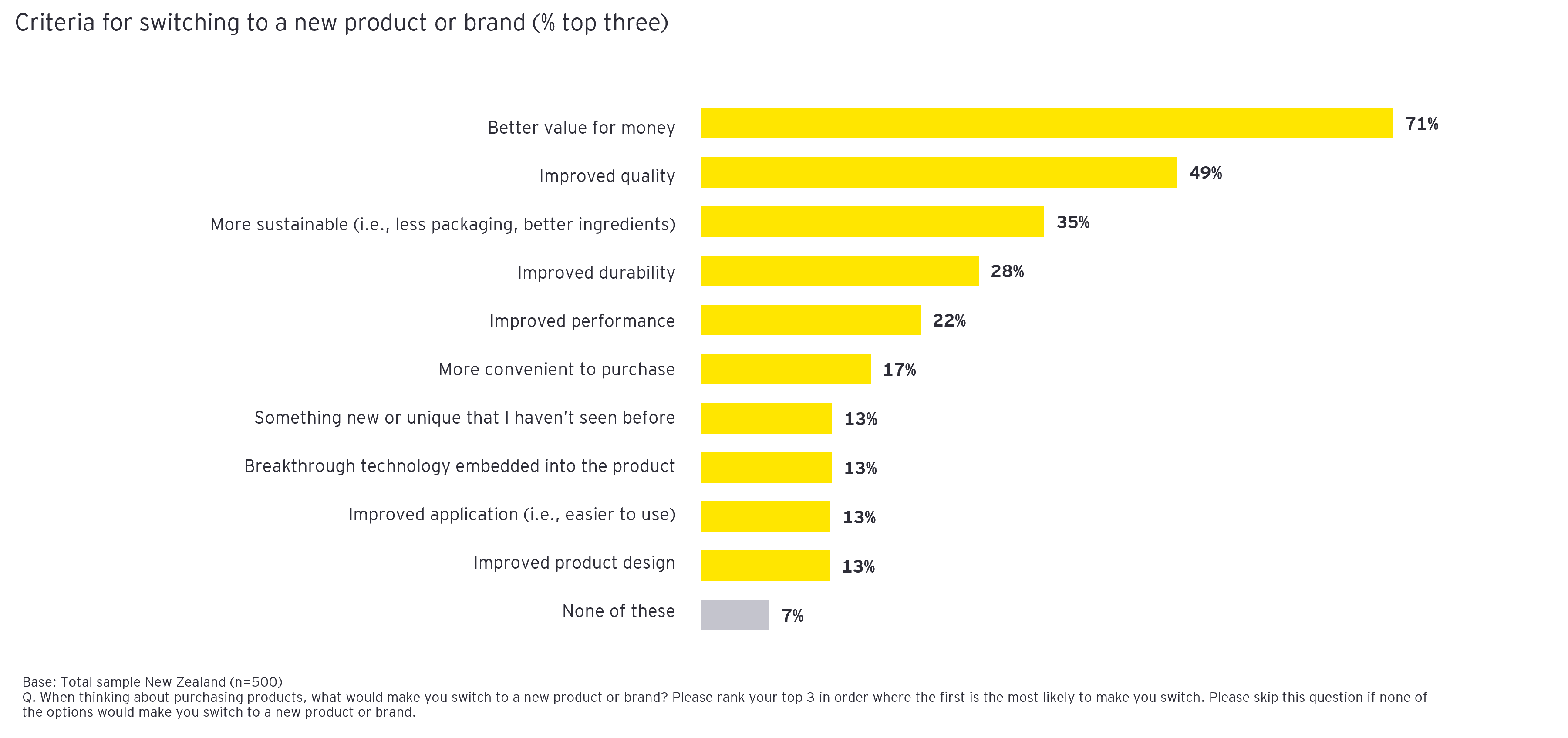
Future Consumer Index Wave 13
Outlook in New Zealand
2023
The economy
40%expect the economy to worsen in the next 6 months (-11)
Cost of living
62%expect the cost of living to rise in the next 6 months (-16)
Affordability
51%say the rising cost of goods and services is making it hard to afford things (-2)
Non-essentials
59%say they are spending less on non-essentials (e.g., fashion, cosmetics, homewares) (-5)
Personal finances
24%expect household finances to worsen in the next 6 months (-4)
Our latest thinking
Summary
Timing is always everything, but when brands and retailers listen to their customers, address pain points, communicate to create connection and focus on value, they can lay the foundations of loyalty today that will make for a much stronger tomorrow.




